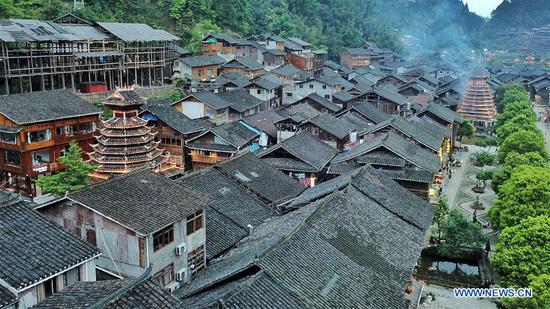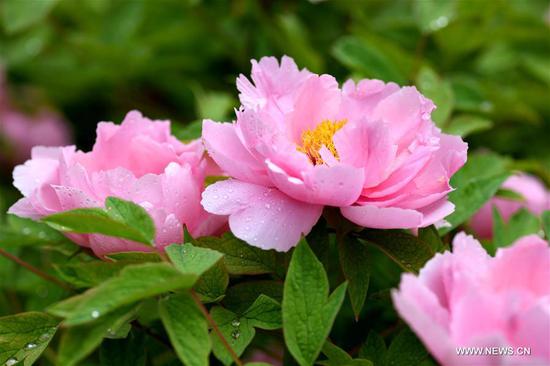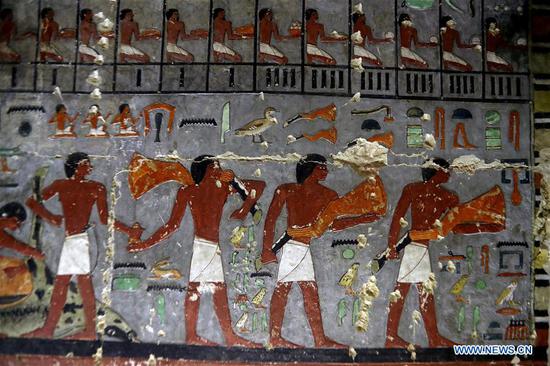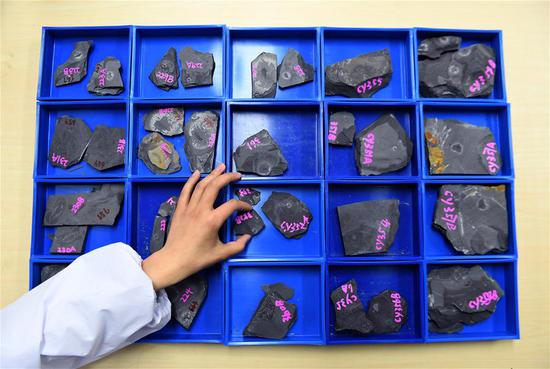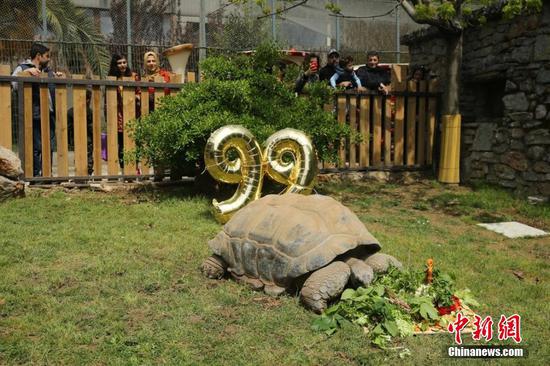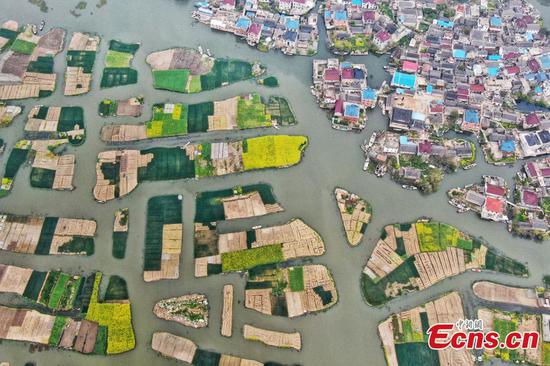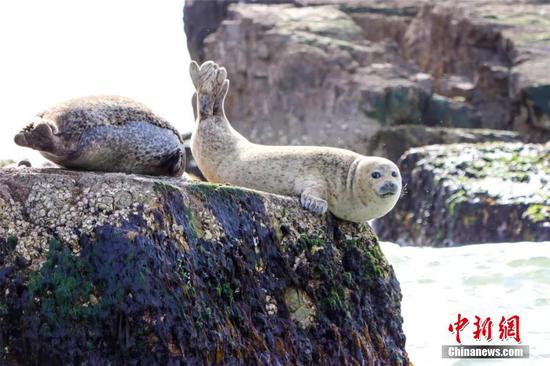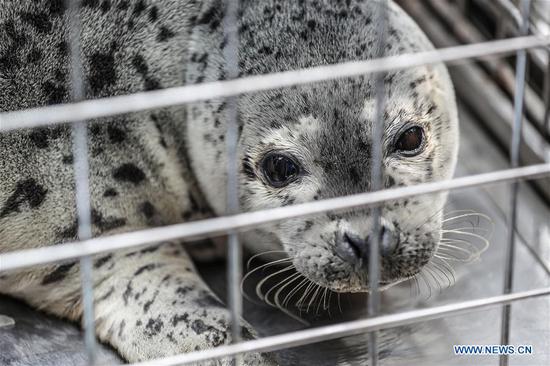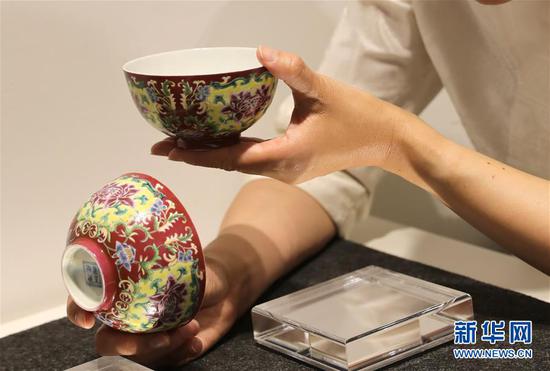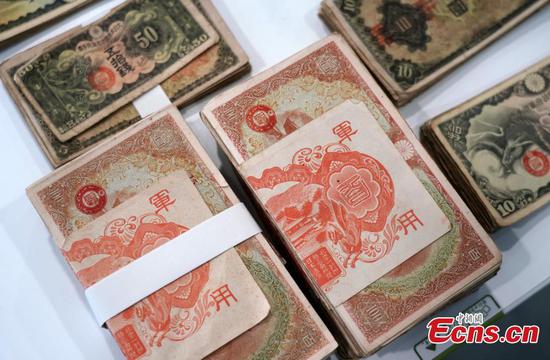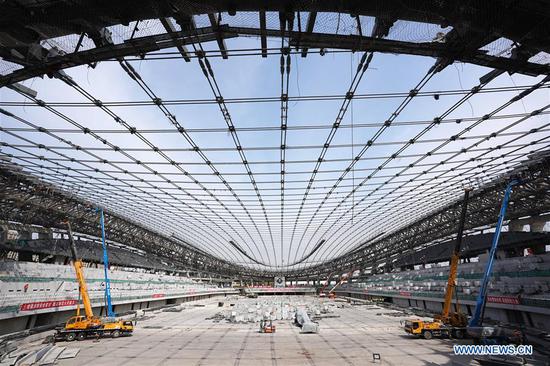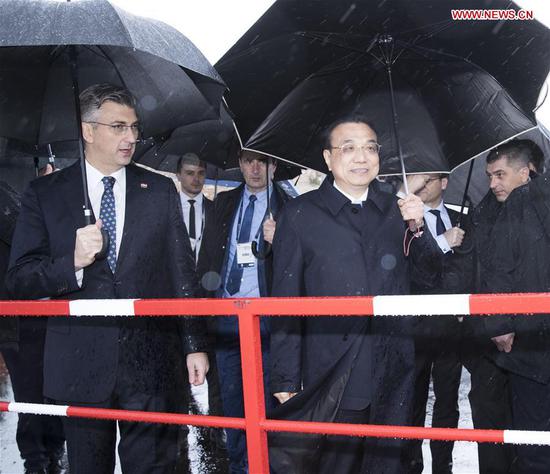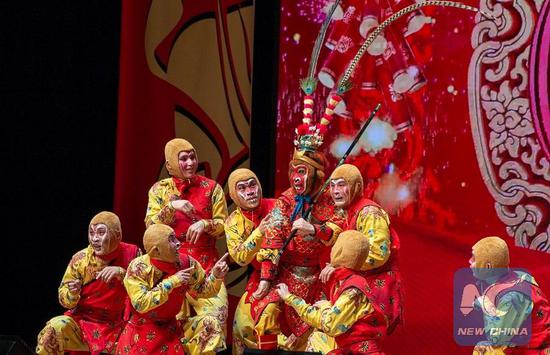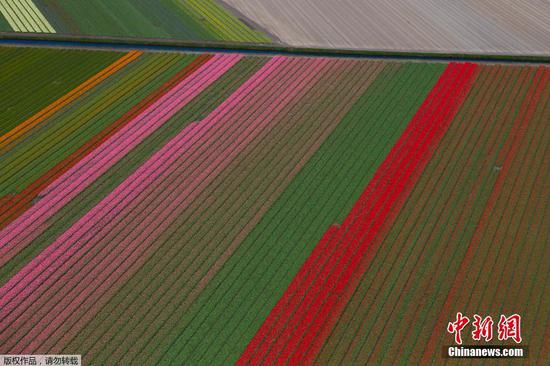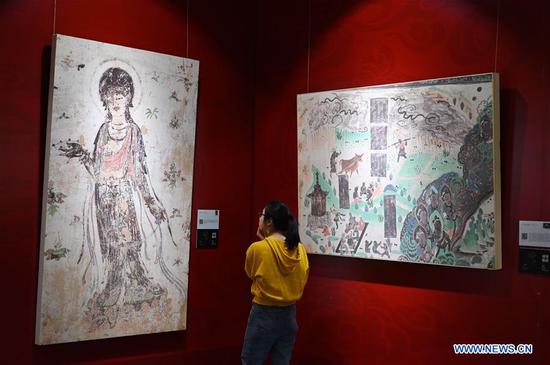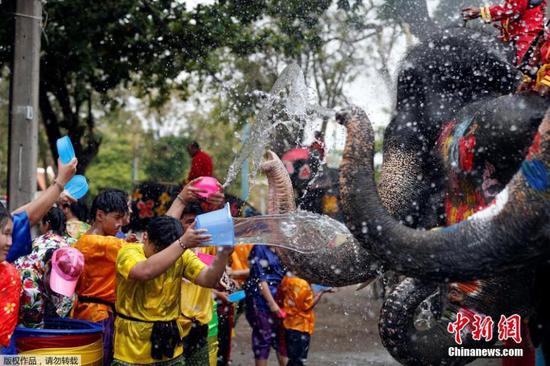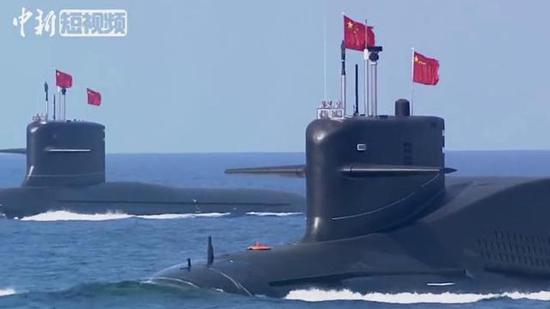Experts from around the world drawn to Hainan to learn about agricultural sustainability

Technician from Yuan Longping High-Tech Agriculture Co show local farmers in Bhaktapur near Kathmandu, the capital Nepal, how to use smart paddy transplanters in June 2017. (Provided to China Daily)
Under the scorching sun, fields displaying 31 major hybrid rice varieties grown in Belt and Road countries attracted more than 700 rice experts and businesspeople on Friday to the golden paddy-themed national park in Sanya, Hainan province.
They had gathered on the tropical island in South China to attend the four-day International Rice Forum, which ended on Saturday.
Sushil Raj Subedi, an official with the Nepal Agricultural Research Council, was excited to see that Keyou 18, a hybrid rice variety developed by Chinese scientists in Nepal, is growing well in Sanya, known as China's "Silicon Valley of seeds".
At the Super Rice Research Base of Yuan Longping, who is known as China's father of hybrid rice, Subedi felt the heavy golden rice ears and bent his knees so he could touch the roots. Standing up with a big, admiring smile, he said, "It is good."
Madhav Prasad Pandey, a professor of genetics and plant breeding at Nepal Agriculture and Forestry University, was impressed by the integration of agriculture and tourism at the 186-hectare national park, where a total of 500 rice varieties are demonstrated. "It is a smart idea to build such a grand national park, a live rice museum, to showcase the rich varieties of rice and pass on the technological culture of rice growing," he said.
Hybrid rice, which is produced by crossbreeding different kinds of rice, was developed by Chinese scientists led by Yuan in 1974. Two years later, China began the widespread growing of hybrid rice, also known as super rice.
With current acreage amounting to 16 million hectares, or about 53 percent of China's rice acreage, and rice output having grown from 6 metric tons per hectare in the 1970s to 15 metric tons now, hybrid rice is known as the "fifth invention in the world". The new variety has made solid contributions to helping feed Chinese - which account for 21 percent of the global population - with only 7 percent of the world's arable land.
Hybrid rice was first introduced overseas to the United States in 1979. The crop is now grown in more than 30 countries and regions, with the total acreage surpassing 7 million hectares, according to reports from the international rice forum.
Tu Shengbin, an expert on hybrid rice with the Chengdu Biology Research Institute of the Chinese Academy of Sciences, still remembers the hardships of the early days after arriving in Lumbini in southern Nepal - electricity shortages and the terror caused by black leeches covering his shirt, pants and socks during field instruction and training.
"The local farmers turned a blind eye to us when we first arrived in Nepal in 2001. But Chinese experts and technicians are now the most respectable guests among local people, since growing hybrid rice has helped improve their lives remarkably," said Tu. The local rice yield was only between 2.5 and 3.5 metric tons per hectare, but the new rice varieties pushed the output to 7.2 tons per hectare by 2014, he added.
Bimala Shrestha, a farmer in Bhaktapur near Kathmandu, the capital of Nepal, said, "I don't know how to express my joyful feeling." She has grown rice for about 20 years but had to change the seeds every year for a higher yield. Income from rice growing was tripled once she began growing hybrid rice in 2017, with support from Chinese technicians under the China-Nepal Agriculture Technical Cooperation Project.
With good stress resistance, and higher and more stable yields, hybrid rice seeds developed by centers in southern China have been warmly welcomed in Southeast Asian and South Asian countries, said Xie Zhenyu, an assistant research fellow at the Research
Institute of Tropical Crop Germ Plasm of the Chinese Academy of Agricultural Sciences.
Xie said the Philippines turned out to be a prime location for experiments with new hybrid rice seeds. Within a decade, Chinese and Philippine scientists have worked together to cultivate 15 new varieties of hybrid rice.
Hybrid rice varieties are grown on more than 10 percent of the Philippines' arable land, which boosted the country's output of rice by 2.4 million metric tons a year, according to Philippine government statistics. The increase helped feed 15 million people, or 14 percent of the country's population, supposing that per capita annual rice consumption is 160 kilograms.
A farmer named Delima, who has grown hybrid rice in the southern Philippines for more than 10 years, said, "Seeing per hectare yield being increased from 8 tons to 11 tons, more of my villagers have been convinced of the 'magic technology' of Chinese scientists and turned to growing hybrid rice."
Tu, the hybrid rice expert at the Chengdu Biology Research Institute, said, "We give the local people 'fish' and teach them how to 'fish' as well."
Tu travels more than 100 days each year, staying for research in Sanya for part of each winter and moving between countries of the Association of Southeast Asian Nations the rest of the time. He said more than 2,000 Chinese rice scientists from around the country, especially those from Hunan, Guangdong, Sichuan and Yunnan provinces, are likewise devoting themselves to promoting hybrid rice among overseas farmers - showing them how to grow hybrid rice, how to produce hybrid seeds and how to process the grains.
Hainan's tropical climate and rich biological resources have made it an important national center for seed propagation. Each winter, more than 7,000 domestic agricultural scientists and workers are busy at the off-season breeding centers. Statistics from the Hainan provincial off-season breeding administration show that 19,950 crop varieties, or about 70 percent of the country's new crop varieties, have been cultivated in the past 70 years in the tropical island province, which is building a global animal and plant resources center as part of its free trade zone development plan.
Wang Sheng, an official with the Hainan provincial government, said arrangements have also been made to invite experts and students from countries participating in the Belt and Road Initiative to China. Since 2015, more than 2,000 foreign experts and students from BRI countries such as Thailand, Myanmar, Cambodia, Nepal, Vietnam, Malaysia and Indonesia have visited Hainan to study agricultural technology, including off-season breeding programs.
Men Pvnlork, a student from the Cambodian Royal Agriculture University who attended a recent 20-day training course in Hainan for more than 20 students from Cambodia, said: "We learned a lot from professors from the Chinese Academy of Tropical Agriculture Sciences. For instance, the skills and knowledge of insect prevention and tropical plant tissue culture will be very helpful to our research back at home."
Meanwhile, Chinese scientists are thinking big. "To ensure sustainable development of agriculture in the world, more efforts will be made to cope with local conditions in hybrid rice research and development to help the crop 'go global' faster," said Xie Fangming, vice-president of Yuan Longping High-Tech Agriculture Co Ltd. Xie, the first of Yuan Longping's students to earn a master's degree, has been heading the company's overseas research and development of hybrid rice.
To promote the crop worldwide, Xie has shared the materials needed for development of hybrid rice free of charge with global rice scientists.
At the international rice forum in Sanya, a coastal resort city at the southern tip of Hainan island, Kenneth Quinn, chairman of the World Food Prize Organization, emphasized the importance of food production, saying that "agriculture plays a significant role in promoting world peace and development".
Chantha Thippavo Ngphanh, the vice-minister of agriculture and forestry of Laos, said Laos has rich land resources and hopes for closer cooperation with Chinese research institutions to get more advanced hybrid rice skills to increase paddy yield.
mazhiping@chinadaily.com.cn











